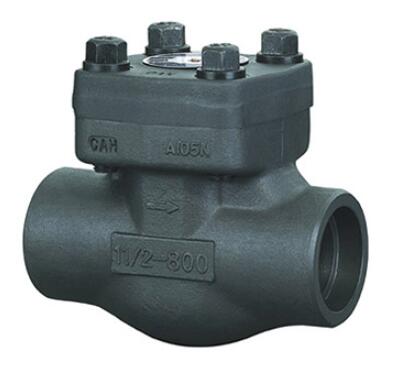Check valves are crucial components in many piping systems, designed to allow fluid to flow in one direction while preventing backflow. They are commonly used in water supply systems, industrial processes, and various mechanical applications to protect equipment and maintain safe operating conditions. Despite their importance and relatively simple design, check valves can fail for various reasons. Understanding these causes is essential for maintaining system reliability and preventing costly downtime. This article will explore the primary reasons why check valves fail and how to address these issues.

Material Incompatibility
One of the leading causes of check valve failure is material incompatibility. Check valves are constructed from various materials, including metals, plastics, and elastomers, each suited for specific types of fluids and operating environments.
- Corrosion: When a check valve is made from a material that is not resistant to the fluid it is exposed to, corrosion can occur. Corrosive fluids, such as acids or saltwater, can degrade the valve material, leading to leaks, weakening, or complete failure.
- Chemical Reaction: Some materials may react with certain chemicals, leading to degradation or loss of structural integrity. For instance, rubber seals may swell, crack, or lose elasticity when exposed to incompatible chemicals, leading to a failure in sealing.
- Erosion: High-velocity fluids or those containing abrasive particles can cause erosion of the valve components. Over time, this wear and tear can lead to a reduction in the valve’s ability to function properly.
Improper Installation
Another common reason for check valve failure is improper installation. Even the best quality valves can fail if not installed correctly.
- Incorrect Orientation: Check valves must be installed in the correct orientation to function properly. Installing a check valve in the wrong direction will prevent it from working as intended, allowing backflow and potentially causing damage to the system.
- Misalignment: Valves that are not properly aligned with the piping can experience undue stress and strain. This can lead to mechanical failure, leakage, or even breaking of the valve body over time.
- Lack of Support: Check valves, especially larger ones, require adequate support to prevent undue stress on the piping system. A lack of support can lead to vibrations and mechanical fatigue, which can compromise the valve’s performance.
Wear and Tear
Like all mechanical components, check valves are subject to wear and tear, which can lead to failure over time. Regular maintenance and inspection are crucial to identifying signs of wear before they lead to catastrophic failure.
- Mechanical Fatigue: Repeated opening and closing of the check valve can cause mechanical fatigue. This is particularly true in systems with high flow rates or frequent changes in flow direction. Over time, the valve components may weaken and fail.
- Seal Degradation: Check valves rely on seals to prevent backflow. These seals can degrade over time due to constant exposure to fluid, temperature changes, and pressure variations. A damaged seal can lead to leaks and loss of functionality.
- Spring Failure: Some check valves use springs to help control the valve’s opening and closing. Springs can weaken, corrode, or break over time, leading to improper valve operation.
Foreign Debris
Foreign debris in the pipeline is a frequent cause of check valve failure. Debris can prevent the valve from closing properly, leading to leaks and backflow.
- Obstruction: Debris can obstruct the movement of the valve disc, preventing it from fully opening or closing. This can cause the valve to remain in a partially open position, compromising its effectiveness.
- Seal Damage: Hard particles can damage the seals within a check valve, leading to leaks and improper sealing. This is particularly problematic in systems where the fluid carries sediment, rust, or other particulates.
- Valve Jamming: In some cases, large debris can become lodged within the valve, jamming it in an open or closed position. This can lead to a complete failure of the valve to regulate flow.
Fluid Hammer
Fluid hammer, or water hammer, is a phenomenon that occurs when there is a sudden change in the flow velocity of the fluid, causing a shock wave to travel through the pipeline. This can be particularly damaging to check valves.
- Pressure Surges: The sudden pressure surges caused by fluid hammer can create forces that exceed the design limits of the check valve, leading to physical damage or failure of the valve components.
- Valve Fatigue: Repeated fluid hammer events can cause fatigue in the valve, leading to cracks, deformation, or even complete structural failure.
Final Thoughts
Understanding the causes of check valve failure is crucial for maintaining system reliability and safety. By selecting the appropriate materials, ensuring proper installation, conducting regular maintenance, and taking precautions to prevent fluid hammer and debris buildup, you can significantly reduce the likelihood of check valve failure. If you need assistance with check valve selection or have questions about maintenance, please contact us. For quality check valves and reliable service, finding the right supplier is essential to ensure the longevity and effectiveness of your piping systems.

